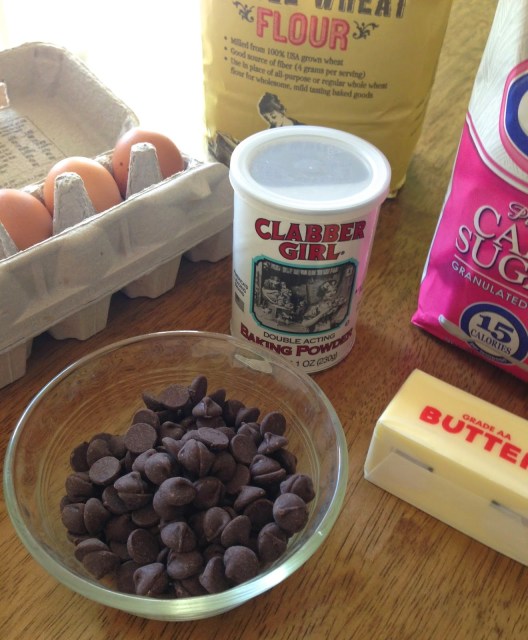
Speaking as a home baker, substitutions in recipes are my very, very good friend, and if you bake, too, I’ll wager you feel the same way. Whether born of an “oh, crap” moment of realization you’re out of an ingredient, or just the desire to bake something a little fancier without having to sign your first-born child away at a specialty foods store, you can always do with the extra kitchen acumen of knowing what can replace what. With a little ingredient do-si-do, you might be surprised what greatness can spring from your mixing bowl. With that in mind, here’s a list of some of my favorite quick and easy ingredient substitutions for baking.
1. Cake flour: When I first graduated from making box-mix cakes to fully homemade cakes, I knew I had to avoid recipes with one ingredient: cake flour. I had seen those $7 “Softasilk” boxes on my grocery store shelf (you know, the one with the box design that makes it look like no one has purchased it since 1978?)

Am I wrong? Does this not look straight out of the ’70s?
and had made the conscious decision not to spend that kind of money on approximately four cups of flour. Then along came the Internet to teach me that making cake flour is ridiculously simple and the Softasilk people have a total racket going on. Here’s how:
For one cup of cake flour, measure one cup all-purpose flour, then remove two Tablespoons. Replace the two Tablespoons with two Tablespoons corn starch. Mix well.
2. Superfine sugar: Like cake flour, I can’t tell you how many recipes I avoided making because they contained superfine sugar. I didn’t know what it was, but I was pretty sure it was going to be expensive, too. It may, in fact, be expensive–I still don’t know; I’ve never purchased it. Because come to find out, all it takes is regular sugar and a food processor:
Place the desired amount of superfine sugar in your food processor with a couple of extra tablespoons to account for reduction in volume; process 1-2 minutes until it feels–you guessed it–super fine, like sand.
3. Half-and-Half: Did you ever wonder what half-and-half is half and half of? It’s half milk and half cream. Therefore, it’s extremely simple to replace by subbing:
1:1 measures of heavy cream and milk (I’d recommend 2%), i.e. 1/2 c. cream + 1/2 c. milk = 1 c. half-and-half.
4. Buttermilk: Buttermilk is a great ingredient for adding richness to breads, pancakes, and desserts. The only problem is figuring out what to do with the rest of that large, perishable carton of buttermilk after the weekend has passed and the pancakes are gone. You have a few options for substituting:
To make 1 c. buttermilk, measure 1 c. milk, then remove 1 Tablespoon. Replace with 1 Tablespoon lemon juice or white vinegar. Let stand at room temperature for 5-10 minutes until curdled.
OR
To make 1 c. of a buttermilk substitute, mix 3/4 c. plain yogurt or sour cream with 1/4 c. milk.
5. Butter/Vegetable Oil: I’d be a fool to say anything can really take the place of butter, but I do frequently want to make my baked goods a bit healthier (though I’m not about to tell you to replace butter with mashed avocado, as I’ve seen on several blogs. Let’s be real here, people.). Even in a rich cake, I’ve found you can get away with substituting up to half of the butter and/or oil content with unsweetened applesauce. I recently did this in a dark chocolate raspberry layer cake and even I would never have guessed it from the taste. Therefore, if you’re actually out of butter, you can:
Mix 1/2 c. unsweetened applesauce with 1/2 c. vegetable oil for 1 c. butter.
OR
To decrease fat content, replace 1/2 of the butter with unsweetened applesauce.
6. Unsweetened Baking Chocolate/Cocoa Powder: I had to roll my eyes the time I was looking for a cocoa powder substitute and found a site that recommended subbing 1 Tbsp. Dutch-process cocoa powder for regular cocoa powder. Like, yeah, I think I would have figured that one out. If you actually are out of one or the other, though, here’s a conversion that works great:
For 1 ounce of unsweetened baking chocolate, use 3 Tbsp. cocoa powder plus 1 Tbsp. softened butter or vegetable oil.
Lastly, one bit of interesting trivia about why the famous baking powder brand pictured above is called Clabber Girl. To “clabber” means to sour, as in soured milk. In the olden days, soured milk was made by leaving milk out at room temperature, to be used as a leavener in baked goods–until 1854, when baking powder was invented. So I guess the Clabber Girl is sparing you the work of actually clabbering, which would take days of waiting for the milk to get sour enough. Thanks, Clabber Girl! Keep on clabbering! Clabber clabber clabber! (Can you tell I really like the word “clabber”?)
At any rate, it’s my sincere hope that this list may keep you from spending extra money on ingredients you don’t need, or running out to the store in your pajamas at 10 PM for some cake flour. Happy baking!

Thanks Sarah! I have avoided or not been able to make recipes because I was missing one of these ingredients. I'm going to bookmark this page so I can go back to it.
Yay! Glad it was helpful.
This is great information! If I could suggest a follow-up, I would love to see an article on what not to replace! As in different ingredients have important chemical reactions for the recipe and can’t be replaced. Food chemistry fun!
Love it! The options are endless.